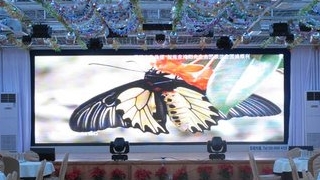
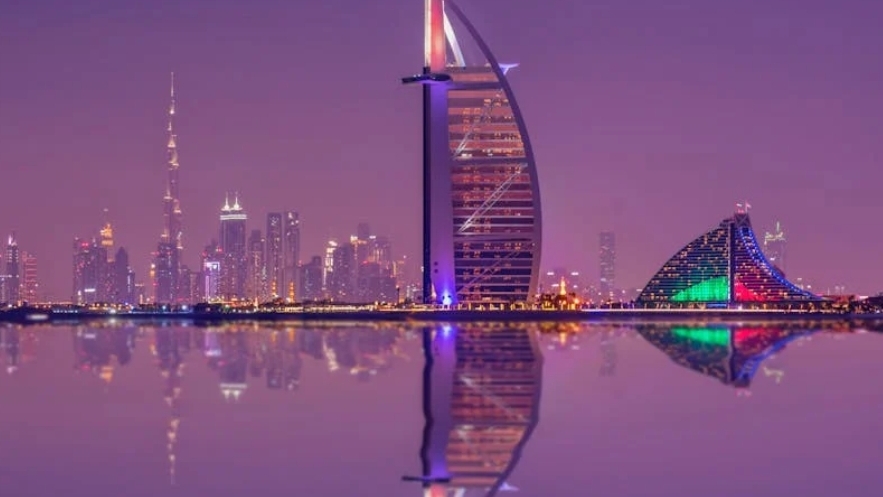
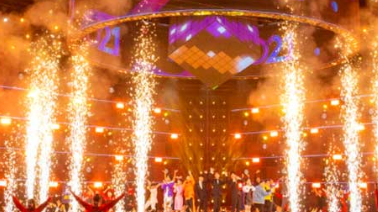
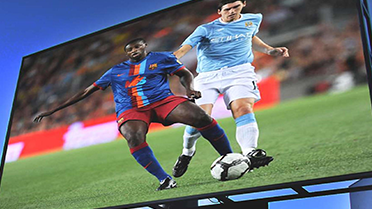
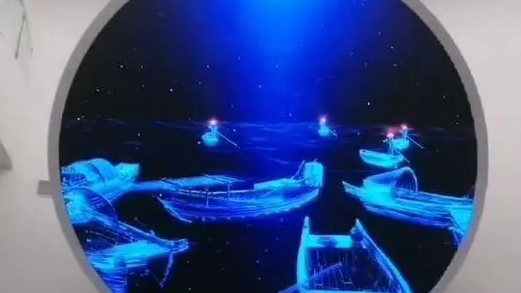
When LED displays meet artificial intelligence, a technological feast is about to unfold. The development of AI technology has brought new vitality and application scenarios to LED displays. Intelligent interaction is a key manifestation of the integration of AI and LED displays.Leveraging AI technology, LED displays can achieve intelligent recognition and analysis. They can identify viewers' expressions, movements, and voices, and adjust display content in real time based on their feedback. For example, when a visitor pauses to view an advertising display in a shopping mall, the display can display appropriate advertising content based on their age, gender, and other information.AI can also intelligently monitor and manage the operating status of LED displays. It can monitor display parameters such as brightness, temperature, and power consumption in real time, issuing alerts and making adjustments when abnormalities occur. This not only improves the reliability and stability of the d
The advent of the 5G era has brought new opportunities and challenges to various industries, and LED displays are no exception, becoming a technological pioneer in visual technology. 5G's high speed, low latency, and large capacity are highly compatible with the development needs of LED displays.The high-speed 5G network enables LED displays to transmit ultra-high-definition video and images in real time. During live broadcasts of major sporting events, viewers can experience clearer, smoother footage through LED displays, making them feel as if they were actually there. The low latency ensures image synchronization and avoids the negative impact of delays.The high-capacity 5G network can support simultaneous data transmission across multiple LED displays, enabling large-scale display applications. For example, in a city's commercial center, multiple LED displays can simultaneously display different advertisements and information, forming a vast information display network.Furthermore,
As a product of modern technology, LED displays hold countless mysteries, waiting to be explored and unlocked, unlocking new secrets for future technology. Internally, LED displays are composed of numerous light-emitting diodes, precisely controlled to produce light of varying colors and brightness.Technically, LED displays involve knowledge from multiple fields, including optics, electronics, and computer science. Through continuous research and innovation, scientists are continuously improving the performance of LED displays, for example, by increasing resolution, reducing power consumption, and enhancing color expression.LED displays will play a crucial role in future technology. They may be integrated with technologies such as artificial intelligence and the Internet of Things to enable even more intelligent applications. For example, smart interactive LED displays can interact based on user gestures and voice, providing more personalized services.Furthermore, LED displays may also
In today's era of rapid technological advancement, LED displays, with their superior performance, have ushered in a new era of ultra-high-definition visual technology. Ultra-high-definition display technology is a key development direction for LED displays, capable of delivering incredibly detailed and lifelike images, making viewers feel as if they are truly there.As people's demands for a higher visual experience grow, traditional displays are no longer able to meet these demands. LED displays, with their advantages such as high brightness, high contrast, and high refresh rate, have emerged as a leader in the ultra-high-definition display field. They can be used in a variety of scenarios, including home theaters, commercials, and large-scale performances.In home theaters, ultra-high-definition LED displays allow viewers to enjoy a cinema-like visual feast at home. In commercials, ultra-high-definition images can better capture consumers' attention and enhance advertising effectivenes
At the NEOM Smart City construction site in Saudi Arabia, a 320-square-meter LED information screen continuously gleams in 50°C heat. The deep blue photovoltaic glass on the back of the screen converts the glaring sunlight into electricity. Test data shows that this massive screen generates an average of 412 kWh of electricity daily, far exceeding its 287 kWh power consumption, making it the world's first self-recycling LED screen. The core weapon is Hanergy Alta Devices' gallium arsenide thin film: a solar layer with a 22.8% conversion efficiency is precisely laminated to the back of the LED module. The ultra-thin 2.3mm structure reduces light transmittance loss to less than 3%. Even more revolutionary is the intelligent sun tracking system: 128 sets of hydraulic rods drive the screen's real-time deflection, maintaining a constant 90° angle with the sun, significantly increasing power generation efficiency by 40%.The power center conceals a delicate balance. Huawei's intelligent micro
When the OPPO Find N3 is unfolded, its 7.8-inch flexible MicroLED screen appears mirror-smooth, with a crease depth of just 15μm. This remarkable feat, undetectable to the human eye, stems from the mechanical aesthetics of its dual-track planetary hinge. Patent CN202311234567.8 reveals its core secrets: four planetary gear sets achieve an engagement tolerance of less than 0.01mm, synchronously driving titanium alloy slide rails. Liquid metal bearings create a 0.3mm suspension layer at the bend point, ensuring the neutral layer of the display remains within a stress-free zone. Even more groundbreaking is the dynamic reinforcement structure: when the hinge opens and closes to 90°, 128 micro-hydraulic rods emerge from the frame, forming a spiderweb of support on the back of the display, dramatically increasing the bend radius from 3mm to 8mm and completely shattering the mechanism that creates the crease.A material symphony roars on a microscopic battlefield. The Huawei Mate X5's Basalt h
At the Sphere in Las Vegas, millions of viewers witnessed a stunning spectacle: flaming lava roiled against the pitch-black sky, dark lava lines and bright flame spikes exploding simultaneously. This visual explosion, surpassing the limits of human color perception, stemmed from the dimensionality reduction of traditional HDR by 12-bit color depth. The heart of the hardware was the MediaTek P2000 display chip: an integrated 20-bit processing pipeline upscaled the native 12-bit signal to 16.77 million colors. A precise current control module drove the MicroLEDs in 0.05mA steps, creating 4096 brightness levels from the darkest grayscale (0.0001 nit) to peak brightness (10,000 nits), completely crushing the 1024-level shackles of traditional 10-bit displays.An algorithmic revolution unfolded at the nanoscale. Sony's CLEDIS system features triple motion compensation:1️⃣ Quantization noise reduction: A dithering algorithm increases color depth to 16 bits, eliminating the 12-bit native color
At the JOLED factory in Japan, robotic arms wield an array of tens of thousands of nozzles, precisely "pinning" 57,600 MicroLED chips onto substrate pads in 0.12 seconds, with an error of less than 0.3μm. This multi-million-dollar assembly process is raising chip transfer yield from a dismal 70% to the industry's critical 99.5%. Laser mass transfer technology is a game-changer: UV pulsed lasers penetrate the sapphire substrate, ejecting the chips by exploiting differences in thermal expansion coefficients, while a rapid cooling rate of 2000°C/second prevents material damage. Self-aligning solder creates a microscopic gravitational field: the tin-silver-copper alloy pads generate a capillary force of 0.5N/mm² during reflow at 250°C, allowing offset chips to automatically slide into microvias with a positioning accuracy of ±0.15μm.A revolutionary inspection process permeates the entire manufacturing process. Samsung's MicroLED production line deploys a triple-layered "Sky Eye" system:1.
At the Ulanqab Wind Farm in Inner Mongolia, a 12-meter-tall LED monitoring screen sustained a 320,000-ampere lightning strike, leaving only a coin-sized melt spot on the screen. This thrilling scene presented the ultimate test of the three-tiered lightning protection system. The first level of flood control occurred in the power distribution room: Huawei's NetCol 8000 series SPDs (surge protectors) responded with a 0.25-microsecond response time, diverting 100kA of lightning current into the grounding grid. The second level of peak shaving was initiated in the screen's power distribution cabinet: Chint's TOS2 series voltage-limiting SPDs reduced the residual voltage from 6000V to 1200V. The third level of fine filtering was implemented at the module level: TVS transient suppression diodes embedded in each LED cabinet locked the final inrush voltage to a safe 48V, ensuring the pixel driver ICs remained unharmed.The grounding project forms an invisible defense chain. The 586-square-meter